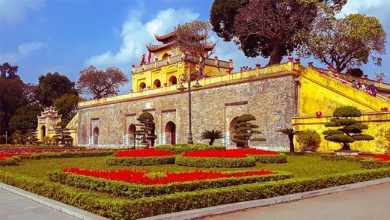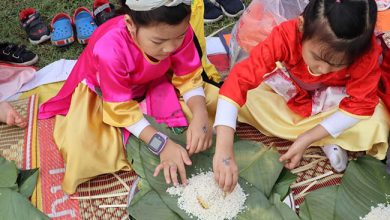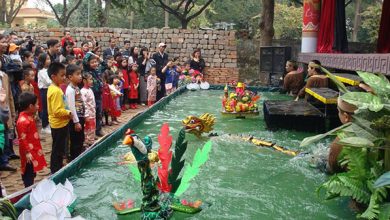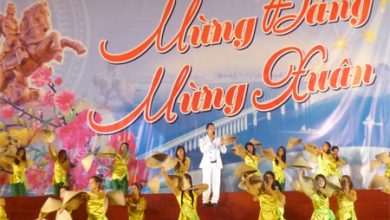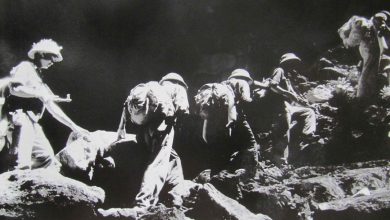Wooden bodhi leaves found in the Vườn Hồng (Rose Garden) area of the Central sector of Thang Long Imperial Citadel
According to the history of Buddhism, Gautama Buddha is said to have attained enlightenment under a bodhi tree; therefore, this type of tree has become the symbol of Buddha’s enlightenment. Under the influence of Buddhism, the image of the bodhi leaf was omnipresent in decorations and sculpture of the Lý dynasty. The bodhi leaf was usually interlaced with the image of dragons and phoenixes in a harmonious and aesthetic manner. The bodhi leaf of the Lý dynasty was mostly made of terracotta and was not enameled. During the excavation of the Vườn Hồng in 2012-2014, however, archaeologists found several wooden bodhi leaves. These are arguably very special artifacts in a special heritage site.
In excavation pit G08, vestiges of an apparently spiritual structure coded 12.VH.G08.KT.290 have been found between coordinates X:-132 and X:-139; Y:-227 and Y:-238 according to the coordinate grid of Thăng Long Imperial Citadel.
The structure was built from a mixture of wood and stone, lying entirely under the floor-making layer of soil of the Lý dynasty and connecting with the cultural layer of the Đại La Period. The revealed relic site consists of three components with special foundation structures: the central foundation and the two symmetrical adjacent foundations to the east and west, covering an estimated area of 400m2.
The central foundation features four mutually embracing layers in a specific order: at the very centre is a big stone block whose surface was sculpted with a circle measuring 66cm in diameter and 34cm in depth. Around the stone block are four wooden beams and joints in the shape of a square. The bottom of the foundation revealed two layers of wooden beams superimposing each other. Surrounding the outer parts are the wooden stakes densely placed to form a square. The outermost layer has two concentric circles formed by the vestiges of big column holes.
The two auxiliary structures are situated on higher grounds than the central structure. They, however, were made totally of wood and had an oval shape.
All of the three structures have either a stone part or an egg-shaped loop at their centres. They also have firmly consolidated foundations, prompting people to think that they were designed to make the three aforesaid structures moveable.
Inside the loop of the central structure, archaeologists found five wooden bodhi leaves. One of them was symmetrical, painted red and sculpted with two dragons kowtowing the bodhi-shaped halo, typical of the Lý dynasty art style.
The most intact bodhi leaf is coded 12.VH.G8.L13.KT.290: 018. It is symmetrical with dragon decorations. The rim of the leaf is adorned with details in the shape of question marks. From the rim inward, at the centre of the leaf are two dragons symmetrical across the central axis of the leaf. The heads of the dragons are raised towards the central section while their bodies meander towards the bottom of the leaf and then rise up on both sides before tapering near the top. Their mouths hold jades while the manes are long and recede towards the back. Their gills are spiral while the eyes are slender with curving eyebrows. Their bodies are round while the scales are even. They measure 8.7cm, by 8.6cm by 1.1cm each.
According to initial research, these bodhi leaves may be related to Tantric Buddhism which was very popular in the society under the Lý dynasty.
Bùi Thị Thu Phương



